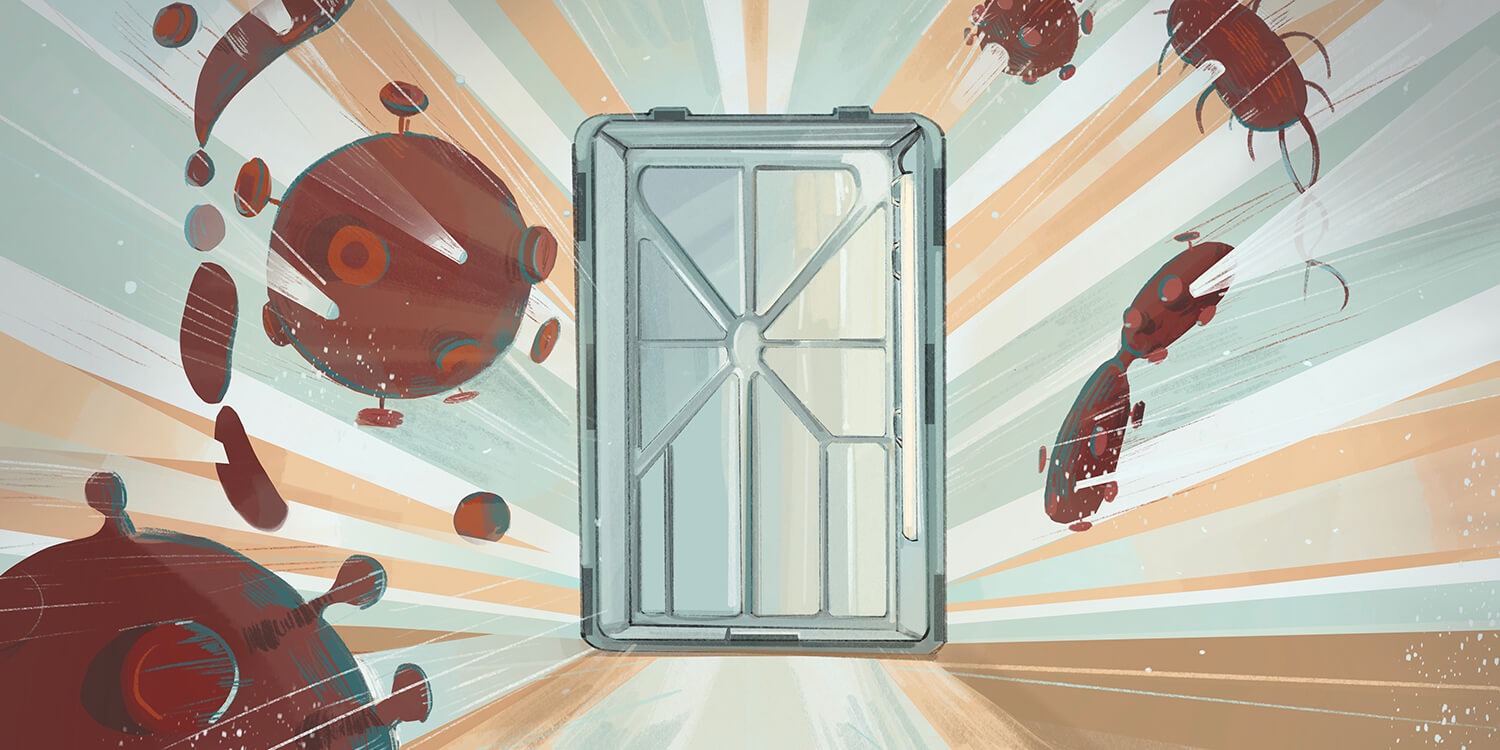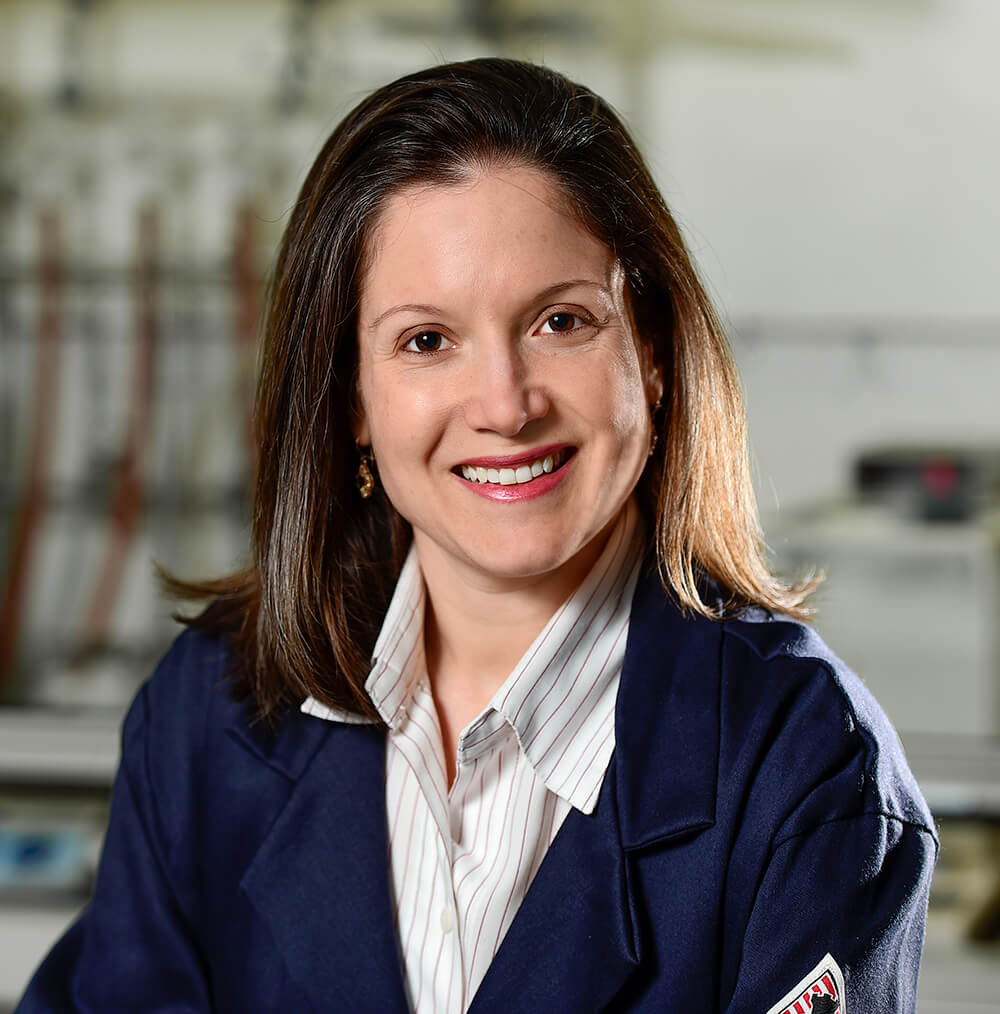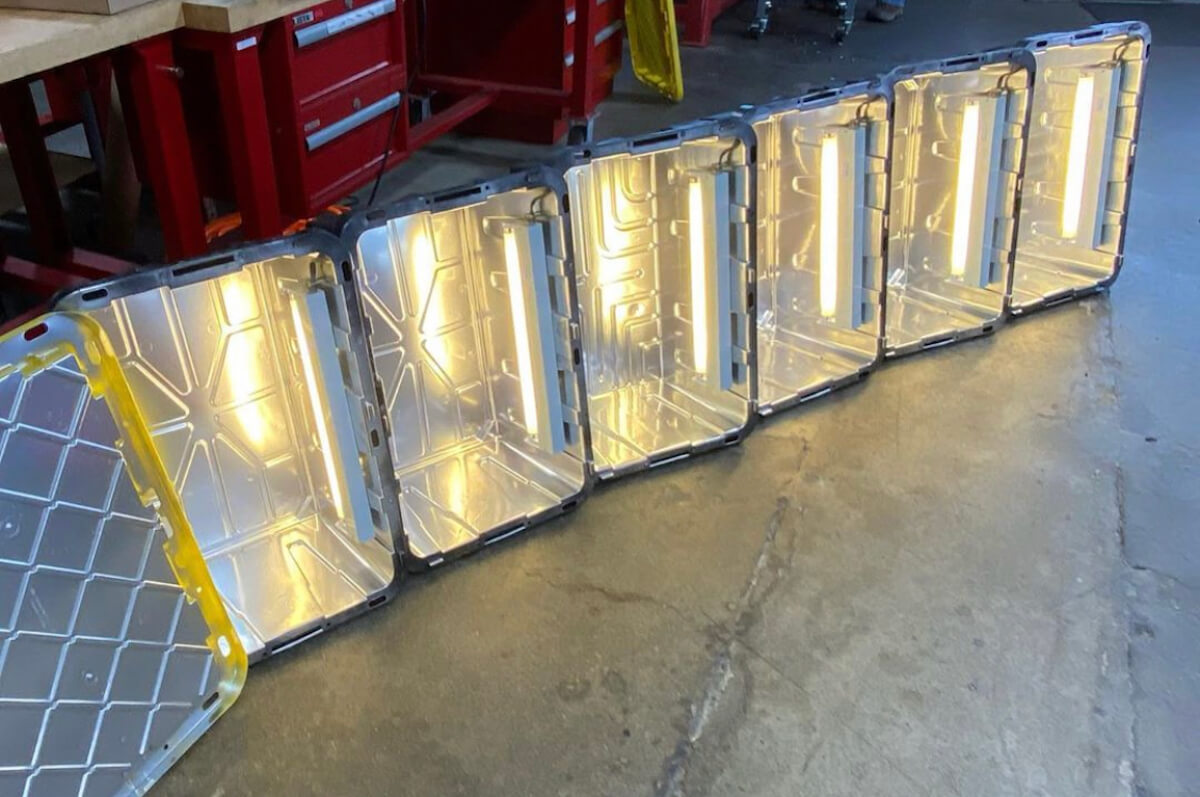The 18-Gallon Plastic Bin That Can Kill Coronavirus
 Illustration/Shutianyi Li
Illustration/Shutianyi LiAS THE COVID-19 crisis descended on the United States, overwhelmed hospitals were quickly hit with a critical shortage of personal protective equipment (PPE), including medical-grade masks and face shields.
Many desperate medical staff had no other option than to reuse their PPE, which in ordinary circumstances should be disposed of after each use — a situation that placed overworked personnel at increased risk of infection.

With this in mind, a joint industry-academic team led by Andrea Armani, the Ray Irani Chair in Chemical Engineering and Materials Science at USC Viterbi, rose to the challenge of developing a quick and cost-effective solution to allow medical professionals to easily sterilize their PPE for safe reuse.
Working in partnership with the Keck School of Medicine of USC and Glendale, California-based SMP Engineering, Armani’s team developed a UV light sterilization box for medical equipment such as face shields that can be built using 18-gallon plastic bins, coated on the inside with reflective chrome paint and fitted with 15-watt, high-intensity UV-C bulbs — items one can easily find at stores like Lowe’s or The Home Depot. The device can sterilize three face shields in six minutes.

UV light is known to be a powerful disinfection method that kills a range of bacteria and viruses, including the coronavirus strain SARS-CoV-2 that causes COVID-19. Of all the types of UV light, UV-C is a short wavelength form and the most effective germ killer on the spectrum. When directed at living cells such as bacteria and viruses, UV-C works by damaging the genetic material in the cells, preventing them from replicating. UV-C has been used widely in environmental contexts, for example, for sterilizing drinking water. However, Armani said it previously had not been used broadly in a hospital setting.
“This is simply because there was no need for it before,” Armani said. “Usually you could clean a room with a primary method like bleach and that would work fine.”
But because of the urgent supply issues that emerged at the start of the pandemic, it quickly became clear that hospitals needed new disinfection methods that they could use in conjunction with traditional chemical-based cleaning methods. This was particularly important for PPE, which could potentially be damaged by cleaning with harsh chemicals.
“You want to make sure that you disinfect the mask, but you also want to ensure that when you’re done, it still has high filtration efficiency and that it still works as a mask,” Armani said. “If you over-peroxide it, it can be really clean but it may not work anymore.”
Armani said that while chemical cleaning would always be a key primary method of sterilization, one advantage of the UV-C method is that it is broad-ranging, targeting DNA and RNA, which means it can address many different types of pathogens.
SMP Engineering further optimized the design and led the manufacturing and distribution to Keck as well as a number of private clinics in the Los Angeles area. Armani said that the team also worked with an academic colleague who is a Marine reservist deployed in Afghanistan and who requested a number of the units for use there. Armani said that given the lockdown, this collaborative effort was critical.
“They ended up in quite a lot of places, all through the USC network,” Armani said.
The research team also made the instructions for building the UV-C disinfection devices freely available using the scientific server arXiv. Their work was published in a range of journals, including Nature Reviews Materials, Biomedical Optics Express and APL Photonics.



